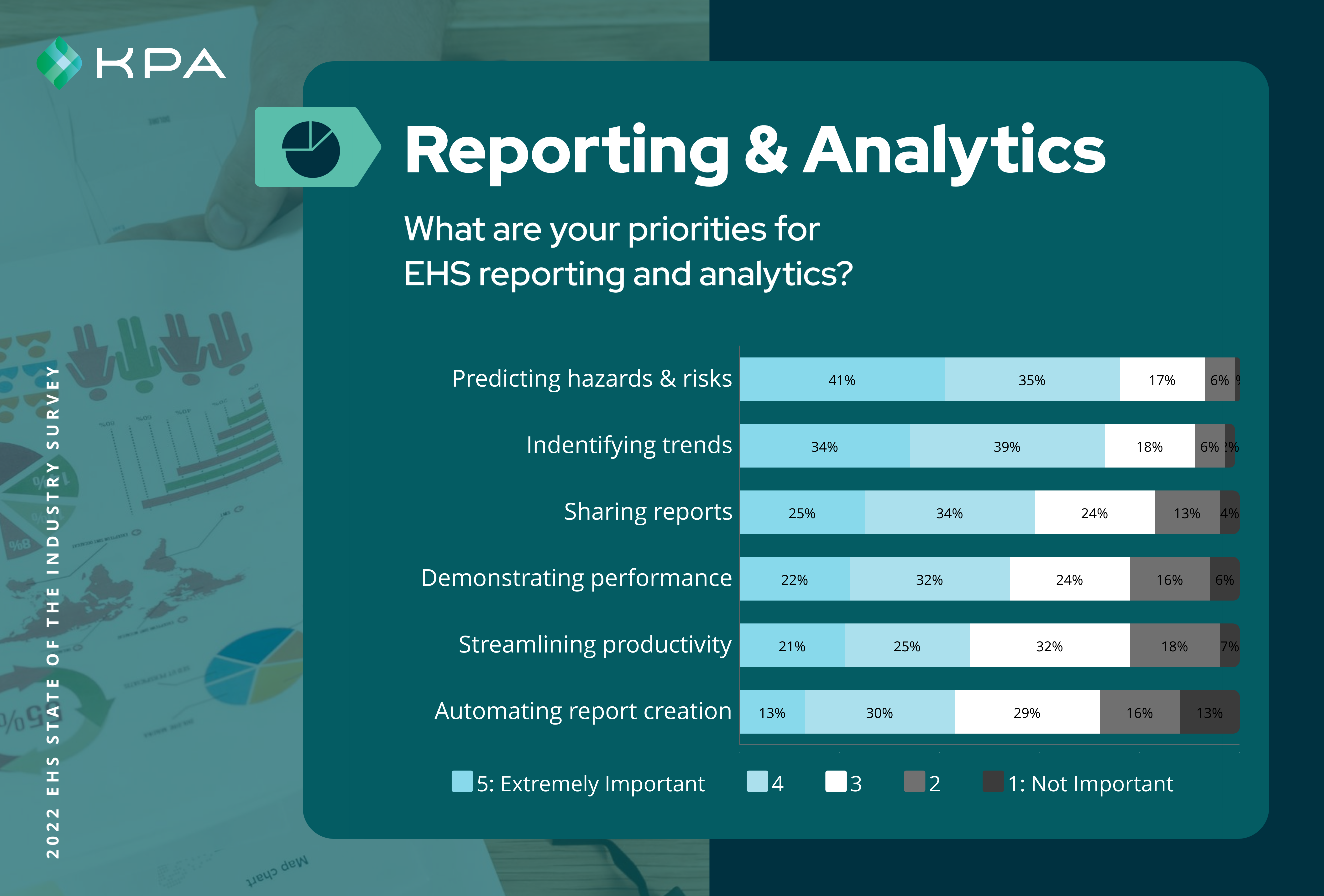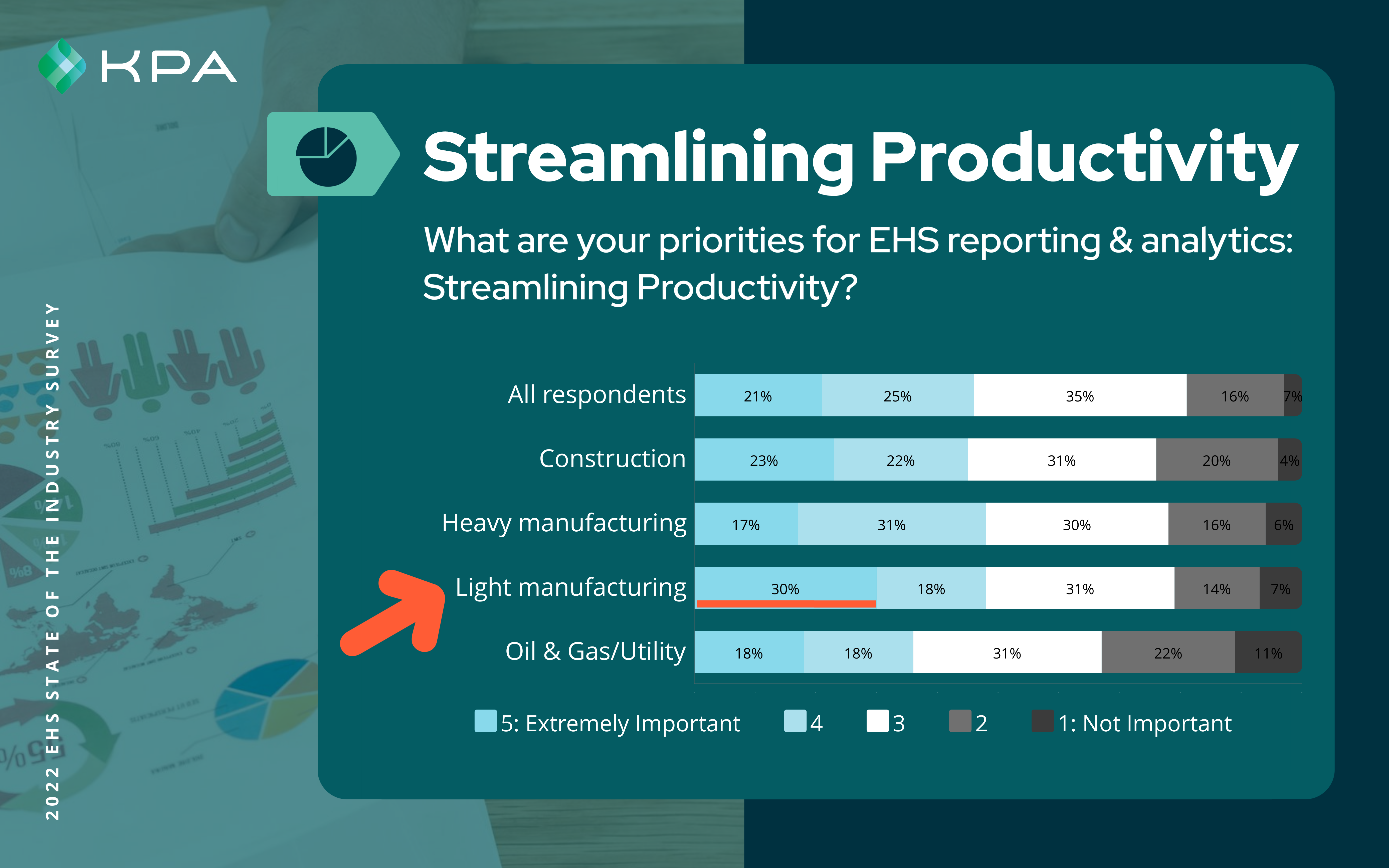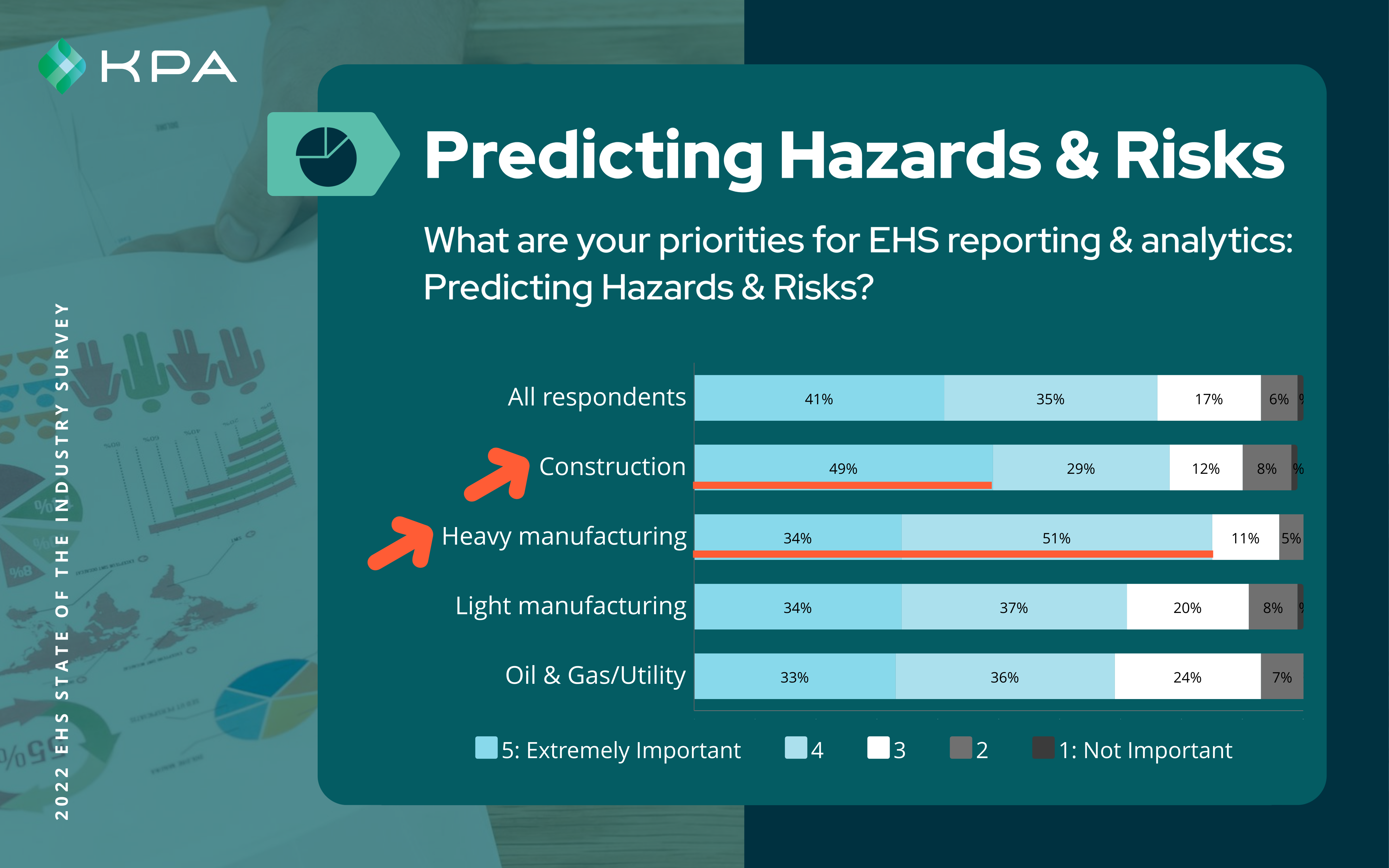We asked respondents what their priorities are for EHS reporting and analytics. In other words, how are they meeting the demand for a safe work environment? Here’s what they had to say.
These are the latest study findings from this year’s State of the Market: EHS Program report. It’s our third year partnering with EHS Today on the study, surveying trends in Environment, Health, and Safety programs.
As you can see in the figure below, the first priority is predicting hazards and risks, with 41% of respondents rating that function as extremely important. The second most common priority is identifying trends and areas to focus, with 34% of respondents rating that function as extremely important.
This is the third in a series of blog posts based on the study, in which we present the data and our conclusions in a quick-read format.
You can catch up on all of the articles in the:
State of the Industry
Research Hub >>

Differences by Industry
There are a few notable differences in responses based on the industry type.
Respondents in most industries ranked streamlining productivity relatively low on the list; the exception was light manufacturing.

Nearly half of the respondents in the construction industry ranked predicting hazards and risk as extremely important.

Eighty percent (80%) of respondents in heavy manufacturing ranked identifying trends and areas to focus on as either extremely important or important. In light manufacturing, that number was 67%, and in other industries, it ranged from 71% to 76%.
Differences by Company Size
Eighty-one percent (81%) of respondents in large and mid-sized companies said that identifying trends and areas to focus on is important or extremely important, as opposed to 63% in small companies.
Large companies ranked all the rest of the priorities as extremely important or important more often than mid-sized or small companies, meaning they have higher expectations of their EHS reporting and analytics. For example, large companies ranked “demonstrate performance through dashboards and visualizations” as important or extremely important 71% of the time, as compared to 55% of mid-sized companies and 43% of small companies.
Tying it all together:
EHS Software Supports YOUR Reporting Priorities
While reviewing the data, KPA’s Product Director, Jade Brainard stated, Data speaks for itself. It allows organizations to establish baselines, benchmarks, set goals, and just keep moving forward. And the more complete your data is, the more accurately you’re going to be able to depict the state of the safety program and focus your safety efforts more effectively.”
So, how do you choose the right EHS software for your business?
Ultimately, the best EHS software is employee-centric. It generates better safety outcomes because it’s easy to use, and people have an incentive to use it. In other words, a system needs to be built for your workforce. If it’s too complicated, unwieldy, or unintuitive—if it doesn’t align with their existing workflows—they won’t use it.
To determine if a solution is the right fit for your organization, ask the following questions:
Are data dashboards included?
Any software you purchase should have strong reporting and dashboard capabilities. Again, ease of use is critical. Keep in mind that EHS might not be a user’s only job. When someone’s busy, they should be able to log in and find the exact data information they need, when they need it.
Are self-guided forms available?
EHS reporting should take minimal time and effort on the employee’s part.
Can every user access forms and an information library?
If the system creates silos, it’s hardly better than a spreadsheets-and-binders approach.
Is the solution mobile-ready?
Business today happens on phones. Any employee should be able to quickly pull out their mobile device and enter information at a moment’s notice.
Want help making a smart decision? Grab a copy of the EHS Software Buyer’s Guide.
KPA EHS – The Backbone of Your Safety Program
KPA EHS helps you develop a comprehensive EHS program that harnesses technology, best practices, and the concerted efforts of your workforce to maintain a safe and productive workplace.
Introducing an EHS software platform tailored to the needs of your business. Manage your safety program in an all-in-one system designed to engage your employees, instill a culture of safety, and enable regulatory compliance.
